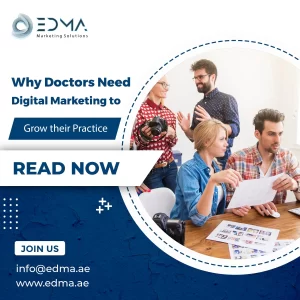How to Optimize User Experience (UX) on Your Website for Digital Marketing Campaigns
Furthermore User Experience (UX) plays a pivotal role in the success of any digital marketing campaign. A seamless and engaging UX ensures that visitors stay longer on your website, interact with your content, In addition take the desired actions—whether that’s signing up for a newsletter, purchasing a product, or engaging with your services. Optimizing UX can increase conversion rates, improve SEO rankings, and enhance customer satisfaction. In this article, we’ll explore practical strategies to optimize the UX on your website to support and amplify your digital marketing campaigns.
- Why UX Matters in Digital Marketing
Good UX is critical for the success of any digital marketing strategy. A website that provides an intuitive, fast, and enjoyable experience not only helps attract visitors but also increases the likelihood of those visitors becoming leads or customers. Here’s why UX matters:
For example
- Higher Conversion Rates: Websites with excellent UX keep users engaged, encouraging them to complete desired actions such as filling out a form, making a purchase, or signing up for a service.
- Improved SEO: Search engines like Google consider user experience factors, such as page load times and mobile-friendliness, when ranking websites. A website with poor UX can hurt your SEO efforts.
- Customer Satisfaction: A positive experience on your website builds trust and fosters long-term relationships with customers. If users find what they’re looking for quickly and easily, they are more likely to return.
- Strategies for Optimizing UX for Digital Marketing Campaigns
Here are actionable strategies to improve UX on your website, making it an effective platform for your digital marketing campaigns:
- Simplify Website Navigation
Clear and intuitive navigation is essential for creating a positive user experience. If visitors can’t easily find what they’re looking for, they will quickly leave your website. To optimize navigation:
For example
- Limit Menu Options: Avoid cluttering your navigation bar with too many options. Focus on the most important sections (e.g., products, services, about, contact).
- Use Clear Labels: Make sure each menu item is clearly labeled and self-explanatory. Avoid jargon or unclear terms.
- Breadcrumbs: Implement breadcrumb navigation to allow users to trace their steps and easily go back to previous pages.
- Enhance Mobile Responsiveness
In today’s mobile-first world, optimizing your website for mobile devices is no longer optional—it’s essential. Google’s mobile-first indexing prioritizes websites that offer a seamless experience across all devices. Here’s how to optimize for mobile:
For example
- Responsive Design: Ensure your website automatically adjusts to different screen sizes and devices.
- Mobile-Friendly Buttons: Make buttons and links large enough to be easily tapped on mobile devices. Avoid placing clickable elements too close together.
- Fast Load Times: Mobile users tend to have less patience than desktop users, so your site must load quickly on all devices.
- Optimize Site Speed
Website speed is a critical factor for both UX and SEO. Slow loading times lead to high bounce rates, and Google’s algorithms take page speed into account when ranking sites. To speed up your website:
For example
- Compress Images: Large images can significantly slow down page load times. Use image optimization tools to reduce file sizes without sacrificing quality.
- Use Caching: Caching allows frequently accessed data to be stored on users’ devices, reducing load times for returning visitors.
- Minimize HTTP Requests: Reduce the number of elements on your page (such as scripts, images, and CSS files) to limit the number of HTTP requests needed to load a page.
- Improve Content Readability
Content is king in digital marketing, but its effectiveness depends on how easily users can read and digest it. To improve readability:
For example
- Use Clear Typography: Choose legible fonts, with appropriate sizes and line spacing. Avoid too many different fonts, which can overwhelm readers.
- Break Up Text: Use headers, subheaders, bullet points, and short paragraphs to make your content easier to scan.
- Contrast: Ensure high contrast between text and background colors for readability. Avoid using low-contrast color combinations like light gray text on a white background.
- Add Clear Calls-to-Action (CTAs)
Your website’s calls-to-action (CTAs) guide users toward taking the next step in their journey with your brand, whether that’s purchasing a product, subscribing to a newsletterز
In the same way downloading a whitepaper. Effective CTAs can boost conversions significantly:
For example
- Visibility: Make sure your CTAs stand out on the page by using contrasting colors, bold text, and strategic placement (e.g., near the top of the page, at the end of blog posts, or after key content sections).
- Clarity: Be clear about what action you want users to take. Instead of generic phrases like “Click Here,” use action-oriented copy like “Get Your Free eBook” or “Start Your Free Trial.”
- Urgency: Create a sense of urgency by using phrases like “Limited Time Offer” or “Buy Now for 20% Off.”
- Personalize User Experience
Personalization helps users feel more connected to your brand and enhances their overall experience. Personalization can improve engagement, lead generation, and conversion rates. But You can personalize UX by:
For example
- Dynamic Content: Use dynamic content on your website that changes based on user behavior. For instance, display products they’ve previously viewed or offer personalized recommendations.
- Location-Based Content: Use geolocation data to show localized offers or content based on the user’s location.
- User-Specific Messaging: Segment your audience based on demographics, preferences, or previous interactions, and show them tailored messages.
- Test and Iterate
UX optimization is an ongoing process. Regularly test your website to ensure it’s meeting user expectations. A/B testing can help you identify what works and what needs improvement:
For example
- A/B Testing: Test different versions of CTAs, landing pages, and website layouts to see which ones perform best.
- Heatmaps: Use heatmaps to track how users interact with your website, including where they click and how far they scroll.
- User Feedback: Regularly gather user feedback through surveys or usability testing to identify areas for improvement.
- Conclusion: Optimizing UX for Successful Digital Marketing Campaigns
User experience is a cornerstone of effective digital marketing. By focusing on navigation, mobile responsiveness, website speed, content readability, personalized experiences, and clear CTAs, you can create a In conclusion website that supports and enhances your marketing campaigns. An optimized user experience not only keeps visitors on your site longer but also improves conversion rates, SEO rankings, and Finally customer satisfaction. Continuously monitor and test your website’s performance to ensure it remains user-friendly and aligned with your marketing goals.
Feel Free Contact us today to learn more and elevate your digital marketing efforts!






